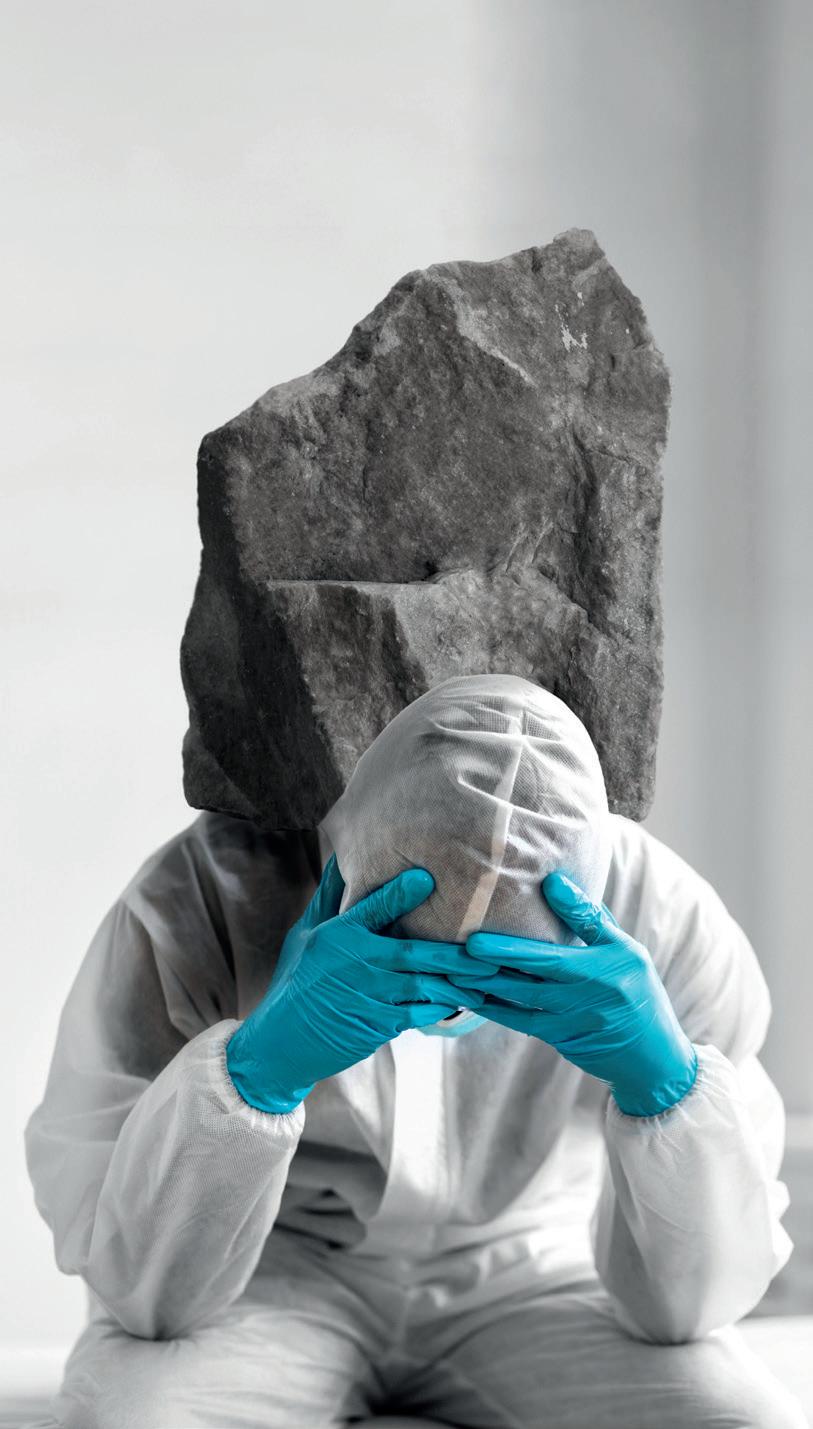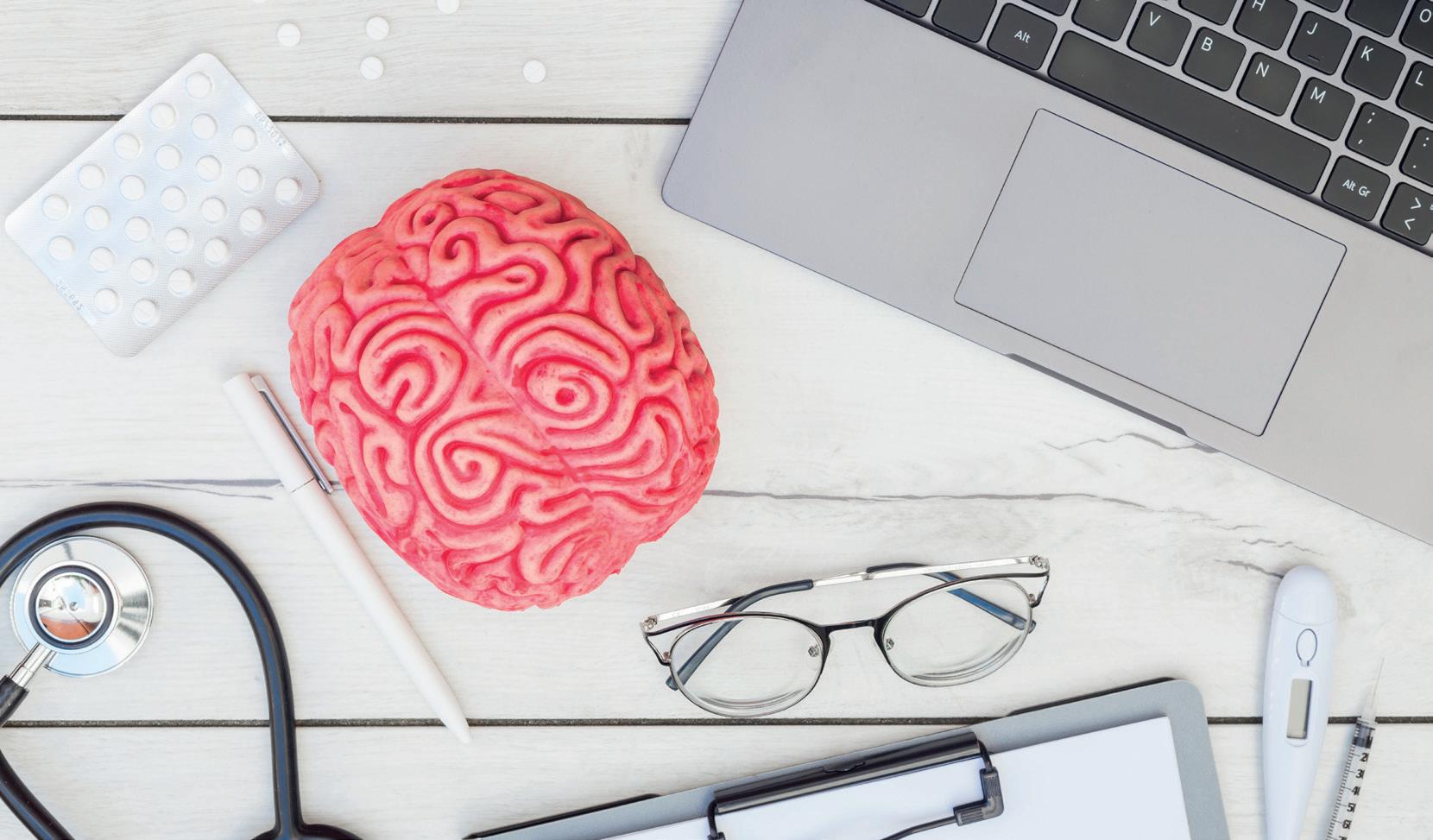
8 minute read
SCIENCE TODAY
Challenges in clinical research; Antagonisms and challenges overcome
Advertisement
Albert Einstein
Slowing down science means being able to learn again, reacquainting oneself with things, reweaving the bonds of interdependence. It means thinking and imagining and, in the process, creating. It means, therefore, creating among ourselves and with others the kind of relationship that works for people who need each other to learn—with others, from others, thanks to others—what a life worth living demands, and knowledge worth cultivating. (Stengers, 2018, p. loc 1, 366).
In Mexico, we began the month of May with the decree that marks the end of the covid-19 health emergency, which began on March 23, 2020, three years ago. Four days after the World Health Organization (WHO) announced the end of the international emergency. The coronavirus pandemic has left around 334,000 deaths and more than seven million infections in Mexico since its inception, according to figures from the National Council of Science and Technology (Conacyt).
At the beginning of the pandemic, when everyone paused their activities, including my research project in the clinical field and in the laboratory, a decade spent studying minimal hepatic encephalopathy was threatened. At that time, I witnessed the death of thousands of health professionals and I, in charge of the research project, had to review the safety conditions of each of the researchers and the study population before thinking about continuing with the committed goals.
Thanks to the wonders of Zoom, with the purpose of safeguarding the safety of the members of the research team, we linked in an emergent way with the president of the Mexican Psychiatric Association, at that time Dr. Bernardo Ng. We both invited Dr. Marlon Saavedra and Dr. Sandra Patricia Caicedo to the team and with the firm intention of making decisions in a reasoned way, we got to work.

We could not remain inherent while the world practically collapsed. We began our reflection with a brainstorming among which stood out the film starring Jim Carrey, Stanley Ipkiss, the famous character of The Mask, who dictated in his most famous script: It is (The Mask) a bond of strength ... It’s supposed to make you feel powerful. This cinematic dialogue adapts perfectly to the prominence of masks during the covid-19 pandemic, becoming a synonym for authority, a valuable possession.
The psychological symbolism of the mask is explained by the use of facial expressions to construct ideas about feelings and desires, so the distortion caused by the mask encourages an individual response that works in two modes: one controlled and one implicit. Afterwards, our talk was immersed in the history of the famous “plague doctor” masks, described by Charles de Lorme.
Martin Kirschner (1879-1942) described its necessity in a chapter of his operating theory: “Measures to Combat Infections.” It was first used in the surgical field in Germany and the United States in the 1920s. The use of protective equipment against respiratory infections within the clinical setting was not questioned regarding its usefulness. This allowed this measure to be transferred to the general population with a beneficial impact, so even masks made with homemade materials are considered a better alternative to the absence of protection.
At the beginning of the pandemic, the general recommendation regarding the use of masks was to rationalize them to the medical field since it was considered that the evidence did not provide conclusive information to indicate it broadly. However, the concern of us and the entire scientific community generated a debate that led to the dissemination of multiple publications that support its usefulness. After weighing the scientific data, the World Health Organization (WHO) updated the guideline for widespread use. The systematic review and metaanalysis that Lancet published in June 2020 was the final endorsement in favor of the indication. Unfortunately, not all countries (including Mexico) had considered making this measure mandatory for their citizens.

Given the circumstances, we chose to conduct an observational, descriptive, and cross-sectional study. The objective was to make a comparison between the countries that had adopted a stricter policy against the use of masks as a protective measure against the COVID-19 disease versus those that had not, comparing the proportion of infected and deceased by the SARS-CoV-2 virus.
We collected the information of the figures of cases and deaths from covid-19 registered on the official page of the coronavirus resource center of Johns Hopkins University. The type of policy against the use of masks was obtained from the official website of the #MASK4ALL movement,
and a flattening variable of the curve was added, with data obtained from the official website of the ENDCORONAVIRUS.org movement. The date for collecting the data was August 30, 2020. In our work we found a significant relationship between the mask policy and the number of infections, which supports the previous findings. The analysis carried out so far was useful.
The recommendation of the widespread use of masks was a valid measure with sufficient scientific support to reduce the number or speed of infections by the SARS-CoV-2 virus, and even gave us available scientific evidence supporting its impact on mortality/lethality, so it was necessary to consider it when establishing containment measures for critical episodes similar to that of the recent pandemic. Later, Eureka! Despite the pandemic and the fact that we are facing a modification in the technique of quantifying the products of oxidative stress, we included Dr. Lazaro, an enthusiastic medical student who would bring valuable curricular tools at the end of the rotation. Because unexpectedly we had put together a manuscript of sufficient scientific value to support decision makers, who also had not increased the costs of the project.

By telling a little about this fantastic adventure in my sphere as a clinical researcher, I intend to present an example of how knowledge mobilization and capacity building in parallel sites can flexibly produce research to improve health services.
In the survey of damages, no one talks about the orphans of the pandemic. The COVID-19 pandemic has left more than 765 million diagnoses and 6.9 million deaths globally, according to the official count, although the WHO itself raised the figure to 20 million lives lost in relation to the disease.
The economic contraction that the covid-19 pandemic has caused (in Mexico of around 8.5% of GDP during 2020 according to INEGI data released in 2021) translates into a reorientation of the public budget and a reduction in international and private financing, particularly in areas not directly dedicated to the prevention, diagnosis, and treatment of the disease. Science in Mexico is one of many orphans that must be treated in an emergent way.
In general, we experienced a slowdown in all administrative and management processes, including access to analytical services (materials characterization and others), since many laboratory technicians were not working, or because they worked with as few people as possible.
We had difficulties in accessing and maintaining equipment (supply chains for laboratory reagents were severely affected worldwide), as well as in procuring materials or components of laboratory equipment (because specialized technicians from abroad servicing certain equipment were not allowed to travel to Mexico). Even for cases in the area of clinical research, access to hospital or field samples was also delayed, affecting the timely delivery of research advances or results. The same applies in the case of experiments with living organisms, since the regulations to avoid contagion had limited this type of work.
Scientists in developing countries must remain focused and aware of cutting-edge science, regardless of how fast or slow they are conducting their own research. Promoting responsible and planned progress in the field of clinical research is necessary. The current situation of health crisis and its ravages can be an opportunity to promote a demand from the community. It is also an opportunity to advance in terms of standardization and regulation, as well as to promote better practices in research, teaching, administration, and institutional management, in such a way that resilience can be cemented in the country’s scientific and educational activity. This implies that research and evaluation must take a more practical and participatory form to support continuous learning.
Dr. Ana Villaseñor-Todd

Scientist, doctor by profession and Mexican businesswoman noted for her studies in minimal hepatic encephalopathy, oxidative stress, quality of life and social cognition. Certified by the Pan American Health Organization (PAHO) as a facilitator of MhGap; CEO VICOMMA Group.
References
Saavedra-Delgado, Marlon E., Villaseñor-Todd, Ana, Caicedo-Agudelo, Sandra P., Lazaro-Presenda, David A., & Ng-Solis, Bernardo. (2021). Impact on COVID-19 morbidity and mortality according to mask use regulations. Gaceta médica de México, 157(3), 288-295. Epub Sep 13, 2021. Retrieved from: https://doi.org/10.24875/gmm.20000801
Delgado Ramos, G., Zanella, R., Cota Araiza, L., & Lopez Torres, R. (2021). Impact of the COVID-19 pandemic on research and teaching in nanosciences and nanotechnology in Mexico. Mundo Nano. Revista Interdisciplinaria En Nanociencias Y Nanotecnología, 14(27), 1e-19e. Retrieved from: https://doi.org/10.22201/ceiich.24485691e.2021.27.69685
Thomaz, S., & Mormul, R.. (2014). Misinterpretation of ‘slow science’ and ‘academic productivism’ may obstruct science in developing countries. Brazilian Journal of Biology, 74(3), S001–S002. Retrieved from: https://doi.org/10.1590/1519-6984.03013
Jorm, C., Iedema, R., Piper, D., Goodwin, N., & Searles, A. (2021). “Slow science” for 21st century healthcare: reinventing health service research that serves fast-paced, high-complexity care organisations. Journal of health organization and management, ahead-ofprint(ahead-of-print), 701–716. Retrieved from: https://doi.org/10.1108/JHOM-06-2020-0218










